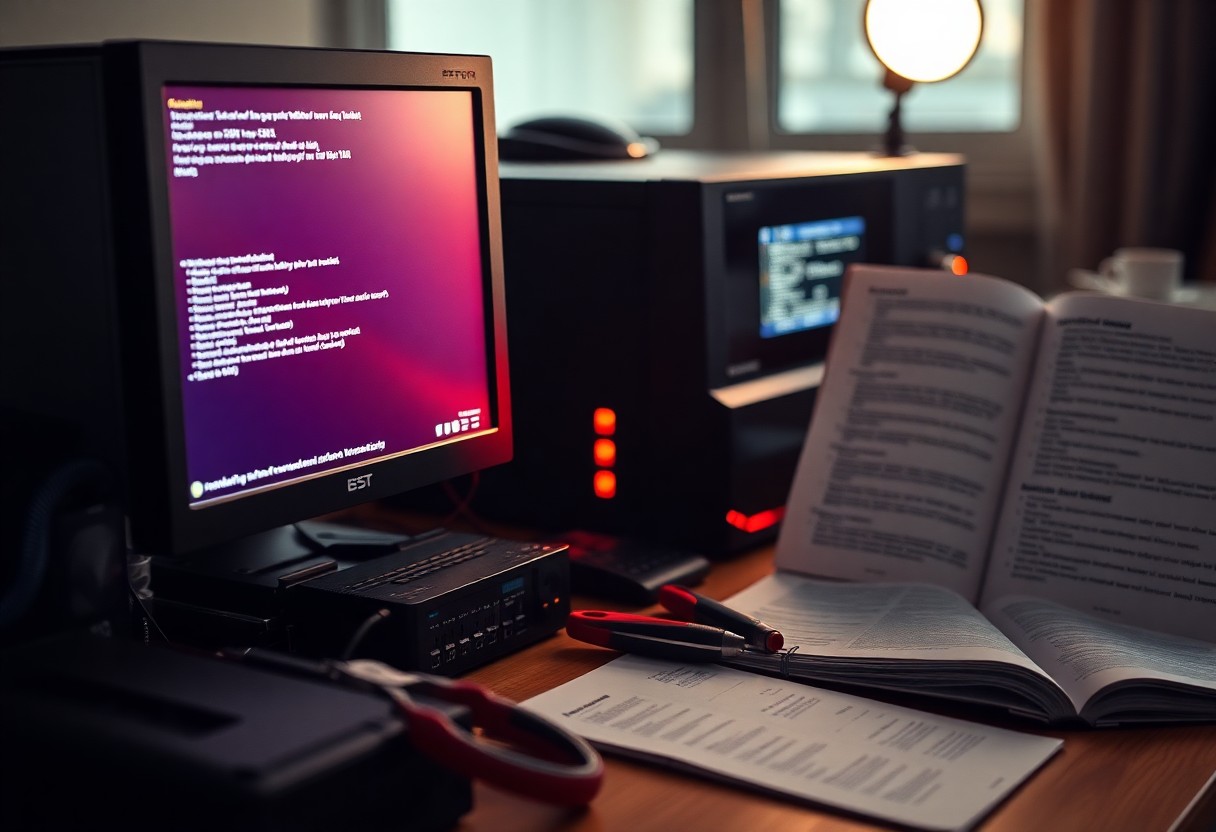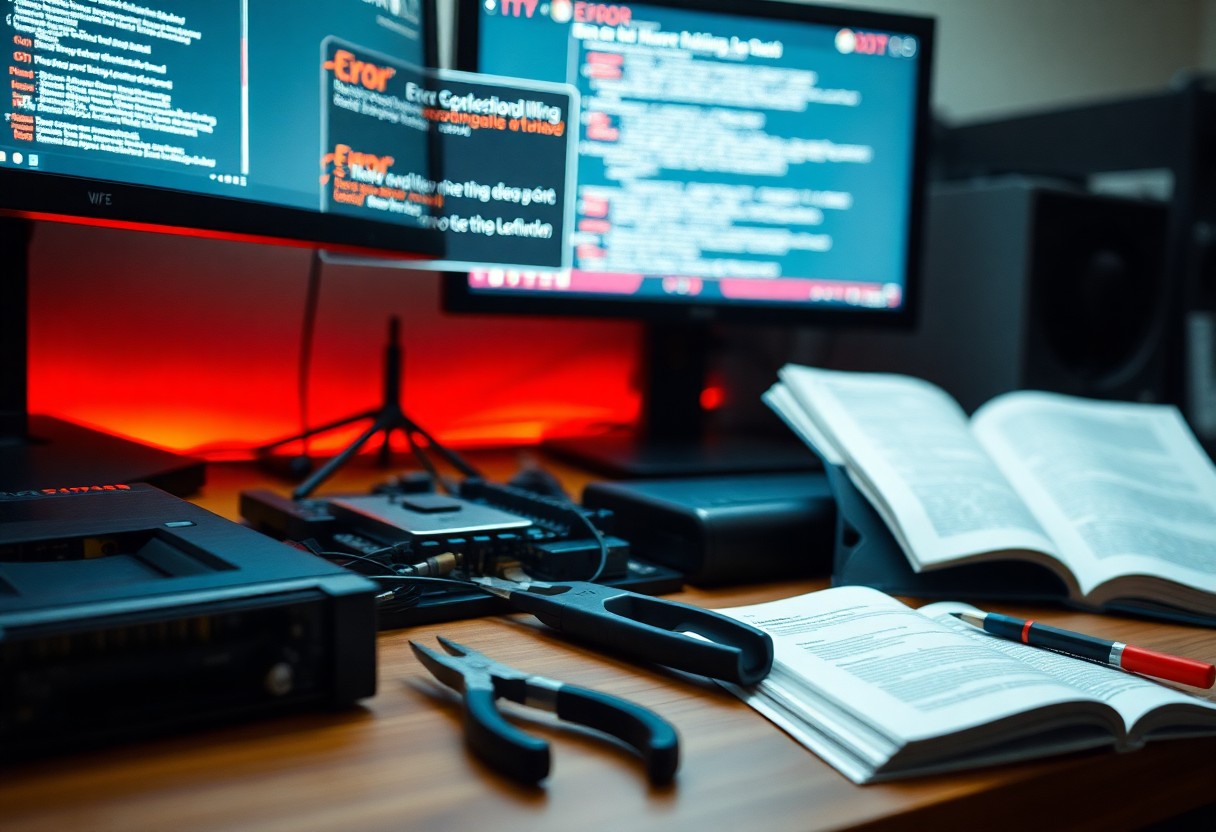Just when you think everything is running smoothly, common PC problems can crop up and throw a wrench into your day. Fortunately, many of these issues are straightforward to resolve without needing to call in a tech expert. In this listicle, you’ll discover ten frequent PC problems that you might encounter and learn how to fix them yourself. With the right knowledge and a little bit of patience, you can troubleshoot these issues and keep your computer running at its best.
Slow Performance
The slow performance of your PC can be frustrating and may hinder your productivity. This lag can stem from various factors such as outdated hardware, insufficient memory, or overloaded software. Addressing these issues promptly will help enhance your computer’s speed and efficiency. Simple maintenance tasks like clearing cache and disabling unnecessary startup programs can significantly improve performance.
Clear cache
Assuming you are experiencing slow performance, one effective method to enhance speed is to clear your browser and system cache. Over time, cache files can accumulate and bog down your computer’s performance. By regularly purging these files, you can free up memory and give your system a fresh start.
Disable startup programs
You may notice that your PC takes longer to boot up due to several programs launching at startup. These unnecessary startup programs can slow down your system’s performance and consume valuable resources. You can easily manage these programs by accessing the Task Manager in Windows or the System Preferences in macOS. By disabling applications that you do not need immediately upon startup, you will streamline your boot process and improve overall speed, allowing your computer to run more efficiently. Regularly reviewing and optimizing these settings can lead to a snappier user experience.
Random Crashes
Even the most reliable PCs can experience random crashes, which may be caused by software conflicts, hardware failures, or even power issues. When this occurs, it can be frustrating, especially during important tasks. Identifying the root cause is vital in addressing these crashes effectively. Start by examining recent software installations or system updates, as they often trigger incompatibilities that lead to instability. Additionally, checking your hardware and ensuring all components are functioning properly can reduce the likelihood of unexpected shutdowns.
Update Drivers
Little things, like outdated drivers, can lead to performance issues and crashes. Frequently updating your drivers ensures that your hardware can interact effectively with your operating system and software. To stay on top of things, visit the manufacturer’s website for your components, or use a driver update tool that simplifies the process. By keeping drivers current, you enhance system stability and reduce the chances of errors that can cause your PC to crash.
Check for Overheating
Even minor overheating can lead to random crashes as your system tries to protect itself from damage. If you notice your PC shutting down unexpectedly, temperature issues could be a culprit. Poor ventilation, dust buildup, or malfunctioning fans could hinder proper cooling. Regularly inspect your system’s internal components, clean dust from fans and heatsinks, and ensure that all cooling systems are operational. You can also monitor temperatures using software tools to track system health, helping to prevent painful crashes before they occur.
Any signs of persistent overheating could indicate that your hardware isn’t receiving adequate cooling, which may lead to more serious problems over time. It’s vital to keep your workspace organized, ensuring that air can flow freely around your PC. Consider investing in additional cooling solutions, like extra case fans or even liquid cooling systems, if you often engage in intensive tasks, such as gaming or video editing. Addressing overheating proactively will improve your PC’s performance and reliability.
No Internet Connection
There’s nothing more frustrating than a lost internet connection when you need it the most. Whether you’re trying to work from home, stream your favorite show, or catch up on the latest news, a stable connection is necessary. Fortunately, there are several steps you can take to troubleshoot and restore your internet access without needing to call a technician.
Restart Modem
Connection issues can often be resolved simply by restarting your modem. Unplug it from the power source, wait for about 30 seconds, then plug it back in. This allows the modem to reset and may resolve any temporary glitches affecting your internet access.
Check Network Cables
On occasion, a loose or damaged network cable can lead to connectivity problems. Ensure that all cables are securely connected to both your modem and your computer or router. Inspect them for any visible signs of wear and tear. If you find any damaged cables, replace them to restore your connection.
Modem and network cables are often overlooked despite their importance in establishing a stable internet connection. A properly functioning cable should feel secure and not wobble when gently tugged. Consider using a different cable, if available, to determine if your current cable is faulty. Don’t forget to check for any bends or kinks in the cables, as these can also disrupt the internet signal.
Blue Screen Errors
All PC users dread the infamous blue screen error, often signaling serious system issues. Also known as the “Blue Screen of Death,” this error can arise from hardware malfunctions, software conflicts, or driver problems. Resolving these errors can greatly enhance your computer’s performance and stability, allowing you to get back to what you do best without interruptions.
Run diagnostics
Little troubleshooting steps can go a long way in identifying the root cause of blue screen errors. Utilize the built-in diagnostic tools in your Windows operating system, such as the Windows Memory Diagnostic or the Check Disk utility. These tools can help pinpoint potential hardware issues or file system errors that may be causing the crashes.
Update or roll back drivers
For optimal performance, keeping your drivers updated is necessary. Outdated or corrupted drivers often cause blue screen errors due to incompatibilities or bugs. You can check for updates through Device Manager or the manufacturer’s website and install the latest versions. If recent updates triggered the problem, you can roll back drivers to previous versions to restore stability.
You can easily manage your drivers through Device Manager. Right-click on the Start button, select Device Manager, and find the device you want to update or roll back. Click on it, then select “Update Driver” for the latest version or “Properties” to access the “Driver” tab, where you can roll back to the previous driver version. Regular maintenance of your drivers will minimize the risk of encountering blue screen errors.

Printer Not Responding
Keep your cool when your printer stops responding. This common issue can often be resolved with a few simple steps. By checking connections, reinstalling drivers, or troubleshooting settings, you can get your printer back to work without needing professional assistance.
Check Connections
There’s a good chance your printer isn’t responding due to connection issues. Ensure that all cables are securely connected to both the printer and your computer. If you are using a wireless printer, check that it is properly connected to your Wi-Fi network and that your computer is on the same network.
Reinstall Printer Drivers
Reinstall your printer drivers if your printer still isn’t working after checking the connections. This process can resolve conflicts and ensure that your device is using the latest software.
The driver software acts as a bridge between your computer and printer. Sometimes, outdated or corrupted drivers can cause communication errors, leading to a non-responsive printer. You can usually download the latest drivers from the manufacturer’s website, uninstall the existing drivers from your system, and then install the new drivers. Ensure you follow any specific installation instructions provided to avoid any further issues.
Malware Infection
For many PC users, malware infections can lead to significant performance issues, data breaches, and privacy concerns. You may notice unusual behavior like slow operating speeds, unexpected pop-ups, or unauthorized access to your files. To safeguard your system, it’s crucial to identify the peak of malware infection and take action to remedy the situation promptly.
Run antivirus software
Malware can infiltrate your system unknowingly, so running an updated antivirus software is your first line of defense. You should regularly scan your computer to detect and remove any malicious software, ensuring your files and personal information remain protected. Make sure your antivirus software is set to automatically update for the latest definitions to counter new threats.
Clear suspicious apps
Clear any applications you don’t recognize or frequently use, as they may be contributing to the malware issue. It’s crucial to regularly review the apps installed on your PC, especially if you notice strange behavior or performance problems. Uninstalling suspicious applications can help regain control of your system.
For instance, you can go to the Control Panel on Windows or use Finder on a Mac to access the list of installed programs. Look for apps that you don’t remember installing or that seem out of place. Before removing an application, conduct a quick online search to determine its legitimacy. If it’s identified as a potential threat, uninstall it immediately to help protect your system from further harm.
Startup Issues
To resolve startup issues with your PC, it’s necessary to identify the underlying cause. Common problems include corrupted files, hardware malfunctions, or misconfigurations in the system settings. By following a methodical approach to troubleshoot these concerns, you can often get your computer back up and running without needing professional help.
Repair Startup Files
One effective solution is to repair your startup files. You can do this by using Windows Installation Media or accessing recovery options. This process helps to fix any corrupted or missing files that might prevent your system from booting properly, ultimately restoring your PC’s functionality.
Run in Safe Mode
For troubleshooting startup issues, you can run your computer in Safe Mode. This special startup mode loads only necessary files and drivers, allowing you to diagnose and resolve issues without interference from third-party applications or services.
It is often beneficial to run your PC in Safe Mode as it provides a controlled environment to identify issues. Once in Safe Mode, you can uninstall problematic software, run malware scans, or update drivers that may be causing the startup problem. If you can successfully boot into Safe Mode, it indicates that a software conflict might be to blame, making it easier for you to pinpoint the problem before returning to standard operation.
Windows Update Failures
Now, you may encounter issues with Windows Update, causing your system to fail to install important updates. This can lead to security vulnerabilities and software incompatibilities. Understanding and addressing these failures can enhance your PC’s performance and stability. Early troubleshooting can save you time and ensure your system remains up-to-date without hassle.
Run troubleshooter
Some users find that running the built-in Windows Update troubleshooter can resolve many update-related issues. This tool automatically detects problems and applies fixes, streamlining the process for you. It’s a straightforward first step towards resolving your update failures.
Reset Windows Update components
Clearly, a deeper fix may be needed if problems persist. Resetting Windows Update components can help restore functionality and ensure updates install correctly. This method involves stopping update services, renaming specific folders, and restarting the services, requiring some command line work.
Any time you reset Windows Update components, you’re vitally refreshing the update system to eliminate corruption or conflicts that may have arisen. To do this, you will need to access the command prompt with administrator privileges. You’ll then stop relevant services like Windows Update and Background Intelligent Transfer Service, proceed to rename the SoftwareDistribution and Catroot2 folders, and finally restart the services to initiate a clean update environment. Following these steps can significantly improve your chances of successful updates.
Loud Noises
Despite your PC functioning properly, loud noises can indicate underlying issues. Unusual sounds often originate from mechanical components such as fans or hard drives. Addressing these noises early can prevent more serious complications and ensure your PC runs quietly, helping you maintain a pleasant working environment.
Check fan operation
Assuming you hear a rattling or grinding noise, the first step is to check the operation of your fans. Open your case and visually inspect the fans for any obstructions or signs of damage. Be sure to listen closely; if a fan isn’t spinning or sounds off, it may need replacement or repair.
Clean dust build-up
While noise issues can often be traced back to malfunctioning parts, dust accumulation in your PC can also contribute to loud sounds. Dust can clog fans and disrupt normal airflow, causing them to work harder and generate more noise.
A regular cleaning schedule is necessary for your PC’s performance. Dust often collects inside your case, especially around fans and heatsinks, which can impede proper airflow and cause your cooling system to overwork. You should power down your PC, unplug it, and use compressed air to gently blow out dust from the components, ensuring a quieter operation and extending the lifetime of your hardware.
To wrap up
So, by familiarizing yourself with these 10 common PC problems and their DIY fixes, you empower yourself to tackle technical issues with confidence. Whether it’s troubleshooting a slow system or resolving software conflicts, having these solutions at hand can save you time and improve your overall computing experience. Regular maintenance and a proactive approach will keep your PC running smoothly, allowing you to focus on what truly matters—getting things done efficiently.



